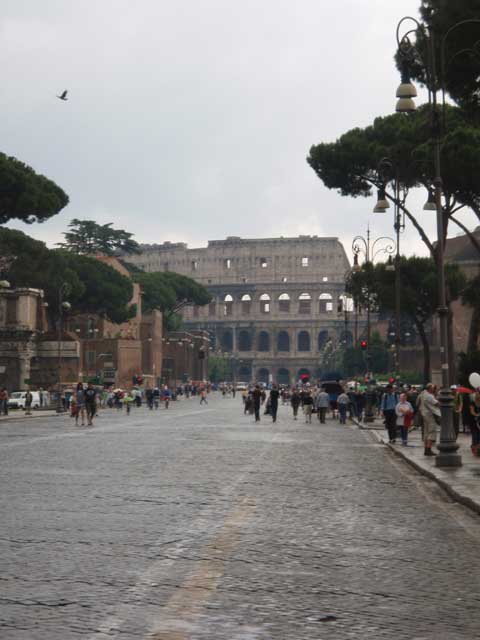
Walking down Via Cavour, traffic was blocked off near the Forum.

For our one day in Rome, I booked another Context Travel tour on classical Rome for 1400 in the afternoon. In the morning we set off by foot for Piazza Navonna, figuring to cool our heels there while waiting for the tour to start. We first headed out down Via Cavour where we walked by Santa Maria Maggiore and triggered memories of my visit 35 years ago as I’m sure I visited the church during the trip with my art class. We continued down the road to the Campodoglio and the Forum where the streets were closed to vehicle traffic that day. We passed the monument to Victor Emanuel on our way through the streets of Rome as I consulted our map to head us to the Pantheon – which was in use as the Church of Saint Mary and the Martyrs this Sunday morning. Walking over to Piazza Navonna, we looked at the fountain of the Four Rivers which was under restoration. My guidebook (Lonely Planet) debunked the story that the figure representing the Rio Plata was shielding his eyes from the church (St. Agnes in Ecstasy) constructed by a rival. Personally, I still like the story and didn’t find the “debunking” totally persuasive.
We located a café on the plaza (think tourist trap) where we had a nice but very overpriced lunch – I had zuppe pomodoro and shared the risotto with scallops and asparagus with Jonathan. Our waiter insisted on bringing a second plate for Jonathan’s portion announcing that “this is Italy, not Istanbul!”
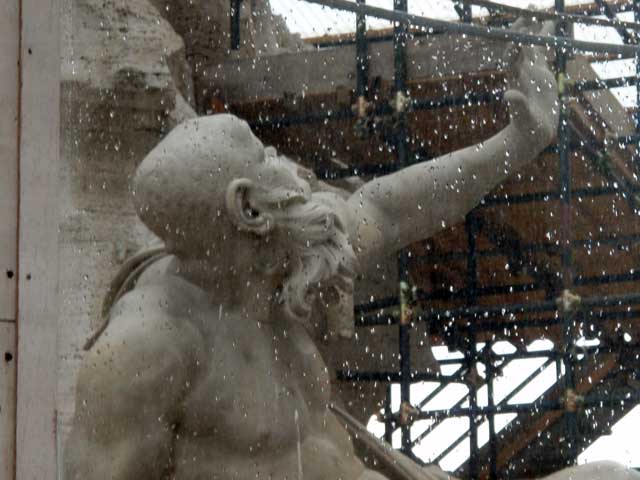
A close-up of the figure representing Rio Plata - holding up his hand to shield his eyes from seeing the church.
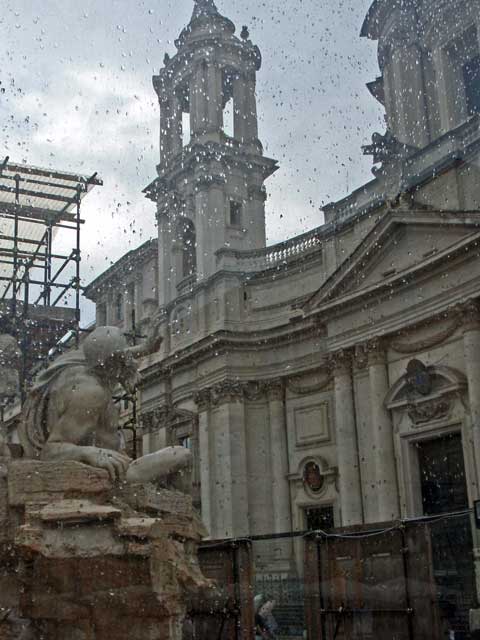
A longer view of the figure and the church through the plexiglass panels. The fountain was being restored.
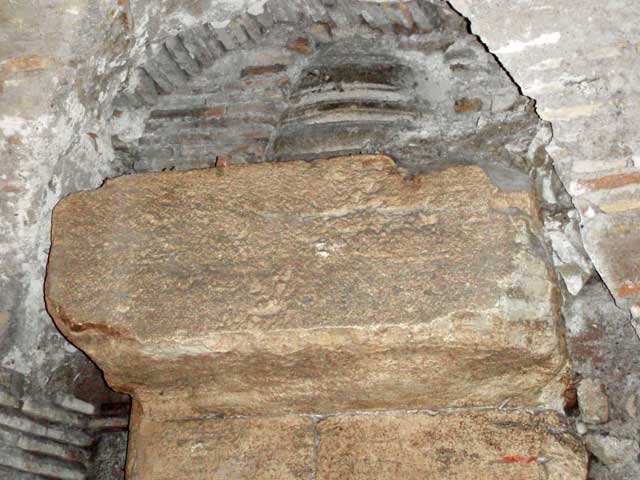
In the crypt of St. Nicola in Carcere - the yellow squared column is from the original Roman temples on the site.
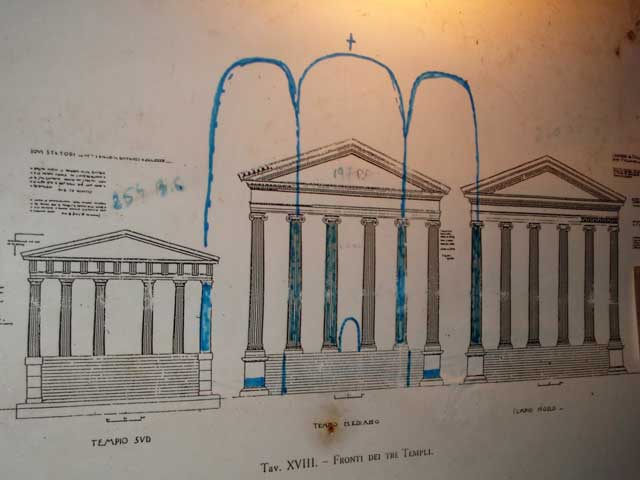
Showing the three temples that once stood on the site, with the extent of the church drawn in by hand in blue.
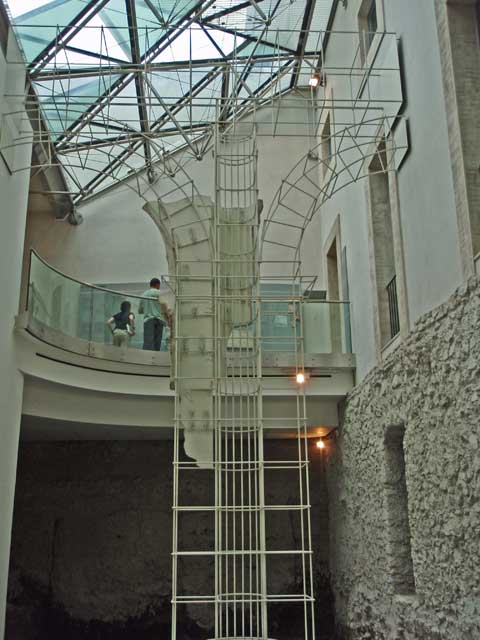
Inside the museum, the open frame structure provides scale of the buildings that once occupied the space.
After lunch we walked over to and followed the river downstream to the Temple of Hercules Victor where we were to meet our guide, Elisabeth Fuhrmann-Schembri. Her discussion focused on the period from ~300 BCE to 300 AD. The features we looked at were northwest of the Roman Forum and showed evidence of modifications of later ages. The most prominent structures of the era were theatres and Elisabeth pointed out evidence of these structures, porticos and gateways that are integrated to various degrees into the fabric of modern Rome.
In one case, we entered a church and through the crypt, entered lower levels where structures from the original Roman temples could be seen. We wound our way through the streets looking at various sites, including the Crypta Balbi, ultimately ending up at the Pantheon, which we were now able to enter. The tour ended in the square outside. It was after 1730 and we began to head back to the hotel. We managed to walk by the Trevi Fountain by accident, and eventually returned to Via Cavour in front of S. Maria Maggiore. We took a nap that was punctuated by a thunderstorm. Jonathan insisted on getting dinner, and despite my grumpy desire to go back to sleep, we got a light dinner at a cafeteria nearby.
We got up early to get to the airport, schlepping the bags back to the train station. The airport express got us to the airport by 0720 and we navigated our way to remote Terminal 5 for check-in and were then bused back to Terminal C where we await our departure (delayed 25 minutes) to Newark.
Our flight to Newark wasn’t fully booked and we both ended up with open seats beside us for the 8-hour flight. Although our flight from Rome was delayed, so was the flight from Newark to LAX, so unlike our flight back from Madrid, we didn’t have to spend an extra night in New Jersey. We caught SuperShuttle back home and landed on our doorstep at 2230, and after brief decompression hit the sack.
So now we are in the “re-living the vacation” phase as we process the pictures – we each took over 1,000 – and begin to publish our travelogues.